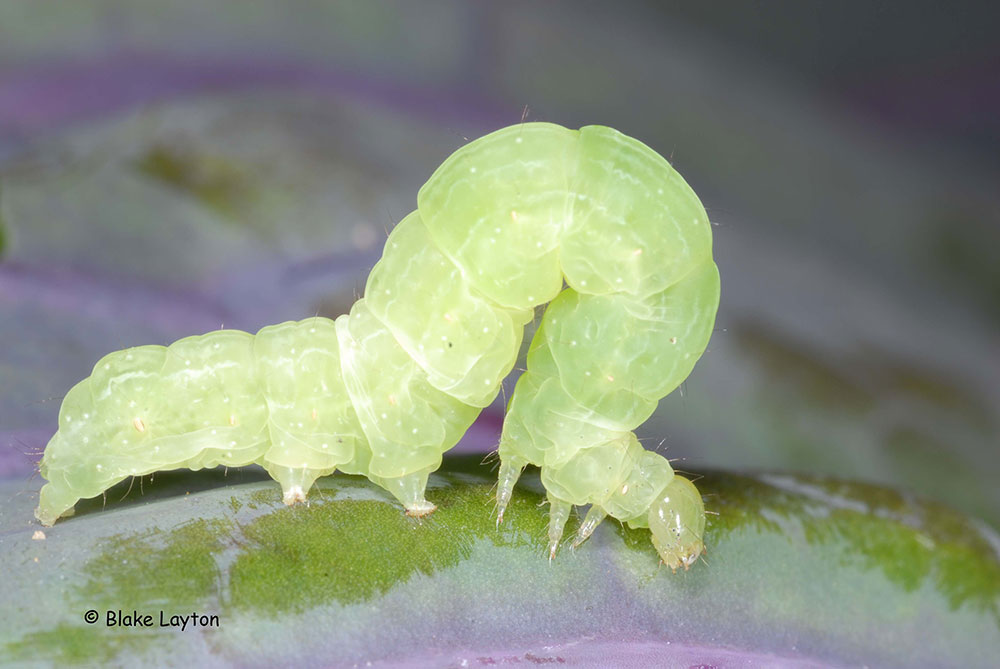Cabbage Looper, No. 26

Trichoplusia ni
Order: Lepidoptera
Family: Noctuidae
Cabbage loopers are common pests of cabbage, broccoli, mustard, collards, and other brassica crops growing in fall and spring vegetable gardens. They occur on a wide range of other hosts, but damaging infestations are most common on brassica crops. These caterpillars are green with white lines and markings and move and rest in a characteristic humpbacked position, like inchworms. They cause damage by eating the leaves, and heavy, untreated infestations can cause severe defoliation. The cocoons, which are attached to the undersides of the leaves, are so thin and flimsy that the pupa can be easily seen through the silk. The adults are drab grey-brown, night-flying moths with a silver figure-8 shape in the center of the front wings. The moths lay their eggs individually, usually on the undersides of leaves.
Control: Watch for small white “windowpanes” appearing in the leaves. This is an early warning sign of leaf-feeding caterpillar infestation that is caused by newly-hatched caterpillars feeding on the underside of a leaf but leaving the thin upper epidermis of the leaf intact. Spray when you first see these signs and you can avoid the damage caterpillars will cause as they grow larger. Cabbage loopers, as well as any other caterpillar pests of brassica crops, can be controlled by spraying with products containing the active ingredient spinosad. Spinosad is readily available to home gardeners under several brand names: Fertilome, GreenLight, Bonide, and Monterey are examples, and some formulations of spinosad are approved for organic gardening. Spinosad itself is organic, but some formulations have inert ingredients that are not organic. Products containing “Bt”, Bacillus thuringiensis kurstaki, can also be used, but spinosad is generally more effective.
See page 11 and pages 12-13 of Extension Publication 2347, Insect Pests of the Home Vegetable Garden, for more information on controlling loopers and other caterpillar pests.
Blake Layton, Extension Entomology Specialist, Mississippi State University Extension Service.
The information given here is for educational purposes only. Always read and follow current label directions. Specific commercial products are mentioned as examples only and reference to specific products or trade names is made with the understanding that no discrimination is intended to other products that may also be suitable and appropriately labeled.

